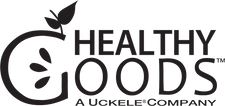My Baby's Messy Eating Story
When my son turned 5½ months old, I was so excited to introduce him to solid food. I sat him in his highchair with everything prepared to give him his first taste, and to my disappointment, he wanted nothing to do with any of it—he pierced his lips and turned his head. I tried various foods—the yummiest pureed fruits I could make, and he ate very little, and just wouldn’t let me feed him with the spoon. I figured he wasn’t ready yet, but two weeks, three weeks, and one month later, he still refused the spoon. It’s funny how things happen…just as I was becoming very discouraged, I came across a type of feeding style called baby-led feeding.
Baby-Led Feeding
Baby-led feeding quite simply means letting your child feed themselves from the very start of introducing solid food. With my son, I started offering him sticks and strips of anything I could think of which was soft enough. I let him be in charge. In time, he learned to pick the food up and “gum” it. To make a long story short, my son flourished with this eating style and by 8 months old, he was shoveling food into his mouth. This was such a great solution to his refusal to eat from a spoon!
Benefits and More
This feeding style offers many benefits (ie: saved time, no purees, no blender, no potato masher, no baby rice cereal, no jarred baby food, no weird fruit and veg combos), and there were a couple downfalls. First, mealtime is slow, very slow, but that can be expected, and he has gotten faster with practice. Second, it’s a total mess! He’s a mess, the floor’s a mess, the highchair is filthy, and anything he can touch from his chair is a mess.
Messy Eating May Equal Faster Learning
I thought the messiness was a negative, but alas, a new study suggests in making all that mess, my child is learning. In fact, toddlers who messed with their food the most learned the names of them more quickly.
Babies’ brains usually pick up words for more permanent objects more easily, such as blocks or daddy, because they can prod and pinch them and they remain the same, more or less, while non-solid objects are a bit more confusing. Think about yogurt: sometimes it’s shaped like a bowl, sometimes a container, and sometimes it’s a big blob on the highchair tray. Or consider the similarities between glue and milk; if you didn’t touch them, they could seem pretty similar.
How the Toddlers Were Tested
To test how toddlers learned the names of gloppy, changeable substances, researchers introduced 14 oozy items, things the toddlers could safely put in their mouths, like applesauce, pudding, juice, or soup. As they offered the toddlers the items, they gave them made up names, such as “dax” or “kiv.” A short while later they asked the toddlers if they knew the name of one of the substances, presented in a different size or shape. Toddlers who could remember the name of the item were obviously relying on more than just what it looked like.
How the Toddlers Processed Everything
Not surprisingly, many toddlers gleefully dove into this task by poking, prodding, touching, feeling, eating—and yes, throwing—the nonsolids in order to understand what they were and make the correct association with the hypothetical names. The study determined, toddlers who interacted the most with the foods were more likely to correctly identify them by their texture and name them. For example, imagine you were a 16-month-old gazing at a cup of milk and a cup of glue. How would you tell the difference by simply looking?
The Outcome From Messy Eating
The toddlers who really got their hands, and sometimes the walls or floors dirty, seemed to be the ones who understood the differences in texture or viscosity better. All that fooling around was actually learning. It also helped if they were in a high chair. Per the researcher, it turns out that being in a high chair makes it more likely you’ll get messy, because kids know they can get messy there. Playing with these foods there actually helped these children, and they learned the names better.
Bottom Line: Eating is such a learning process and experience, considering the variety of textures, colors, smells, temperatures, and flavors. I hope all parents allow their children to explore the wonderful world of food, and just accept the fact that it's going to be messy, but the mess is benefiting their child.
In Health and Happiness,
Kelly Harrington, MS, RDN
Registered Dietitian Nutritionist for Healthy Goods
References:
Perry LK, Samuelson LK, Burdinie JB. Highchair philosophers: the impact of seating context-dependent exploration on children's naming biases. Developmental Science.

